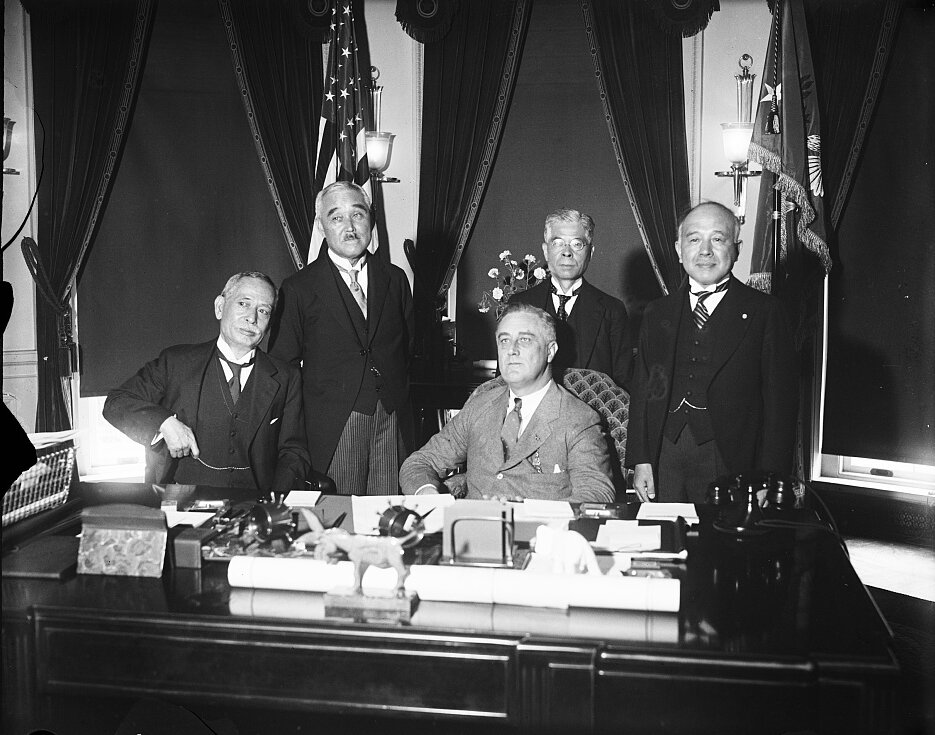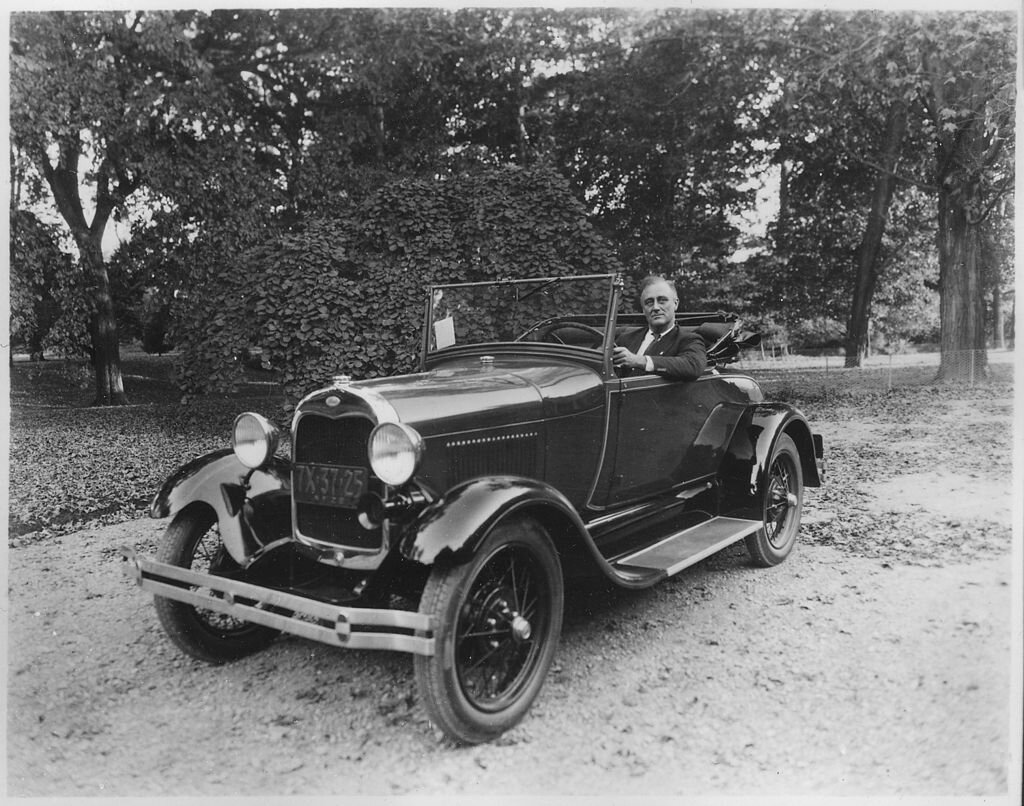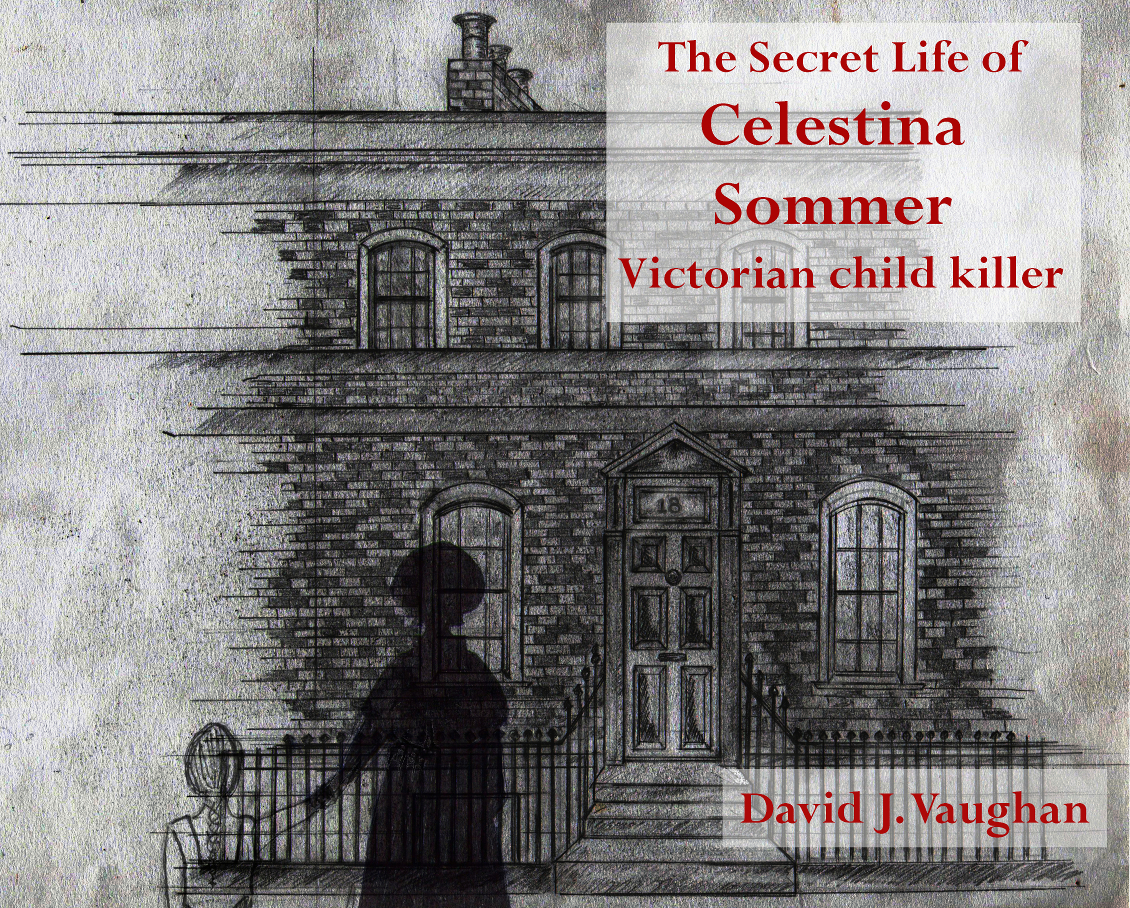Joe Lieberman (born 1942 and Senator for Connecticut from 1989 to 2013), a Democrat before becoming an Independent, had support from conservative, Jewish, and Christian fundamentalists alike. He voted conservatively on some issues, but also had a liberal voting record. It was his independent conservative Democratic voting record which led to his position as Al Gore’s Jr’s. presidential running mate in 2000. It was Lieberman’s nonpartisan policies which made him a unique, memorable, long lasting, and well-respected senator.
Daniel Boustead explains.
Joe Lieberman with President Ronald Reagan in 1984.
Joe Lieberman first ran for the U.S. Senate in Connecticut in 1988 as an observant Modern Orthodox Jew (1). This was evident because the nominating convention was on a Saturday and he could not go (1). He accepted the nomination in a pre-recorded announcement, and it was all over the Connecticut newspapers ([1].) The fact that Joe Lieberman would not do politics on a Sabbath won wide support from both people of Jewish and Christian faith in Connecticut while running against three-term incumbent Lowell P. Weicker Jr. (1). Early in his U.S. Senate career Joe Lieberman friend, then U.S. Senator Al Gore Jr., would turn on certain lights for Joe Lieberman when he stayed over with him at his parents’ house out of respect of Joe’s religious practice of refraining from work on the Sabbath(17). In 1995, Joe Lieberman co-sponsored a bill called the Jerusalem Embassy Act of 1995, calling on the President to move the embassy from Tel Aviv to the holy city of Jerusalem([2]). This bill helped garner support with Jews and Fundamentalist Christians. In 2011 Joe Lieberman co-wrote a book with David Klinghoffer entitled The Gift of Rest: Rediscovering the Beauty of the Sabbath(3). This book showcased his religious observance in his own life and helped inspire both Jews and fundamentalist Christians. In 1988 in a Senate debate between Lieberman and liberal Republican Senator Lowell P. Weicker Jr., he said he would not sign a letter that Weicker signed demanding negotiations between Israelis and Palestinians(4). The same letter also mentioned that Israelis should follow U.N. Resolution 242 in which they would withdrawal from all Arab territories captured in the 1967 Six Day War (4). To many Christians Fundamentalists and Jews in Connecticut, Lowell P. Weicker Jr., had committed an act of sin and high treason and this helped ensure Joe Lieberman’s Senate victory.
Cuba
Liberal Republican Senator Lowell P. Weicker Jr. admitted in a debate on October 20th, 1988 that during the time he went to Cuba and brought American hostages out, he talked with Fidel Castro about normalizing relations and ending the economic trade embargo. (4). This effectively ended Weicker’s career (4). Joseph Lieberman said of Weicker’s visits to Cuba “I know from public records that Mr. Castro gave him $100.00 worth of Cuban cigars to bring back with him” and in another quote “He has become the Senate’s No.1 patron and advocate for Fidel Castro”(4). Weicker countered that Joe Lieberman’s campaign was being financed by Cubans from Miami, Florida. This was divisive, and to which Joe Lieberman replied: “I have received some contributions from the Cuban American community because there are two people in the world today that they and I would like to see out office one is Fidel Castro and the other is his better advocate Lowell. P. Weicker Jr.”(4). In another devastating blow the National Review and conservative host of Firing Line William F. Buckley Jr. as well as his brother former U.S. Senator of New York James Buckley, formed BuckPac to support Joe Lieberman over Lowell P. Weicker Jr. (5). On September 2nd, 1988 William F. Buckley Jr. featured a story to showcase his support for Joe Lieberman in his National Review entitled “Does Lowell P. Weicker Jr. Make You Sick”(5). The fact that Lowell P. Weicker Jr. was so pro-Castro alienated him from the predominately conservative Christian and republican leaning Cubans as well as Jews, the Republican establishment, and other Americans. This helped ensure Joe Lieberman’s victory.
On March 5th, 1996 Joe Lieberman was one of the 74 U.S. Senators that successfully passed the Cuban Liberty and Solidarity Act of 1996, which sought international sanctions against the Castro government in Cuba, to plan for support of a transition government leading to a democratically elected government in Cuba, and for other purposes (6).
Violent video games
In 1993 Senator Joe Lieberman chaired a hearing on violent video games because he was disgusted by the content of many games (7). This hearing lead to the formation of the Entertainment Software Rating Board (ESRB) on September 16th, 1994, which gave a video game rating system that exists to this day. The ESRB rating system is enforced via the voluntary leverage of the North American video game and retail industries for physical releases; most stores require customers to present photo identification when purchasing games carrying the ESRB’s highest age ratings, and do not stock games which are not rated. Additionally, major console manufacturers will not license games for their systems unless they carry ESRB ratings, while console manufactures and most stores will refuse to stock games that the ESRB has rated as being appropriate for adults only (8). Joe Lieberman became a hero to parents of Christian and Jewish faiths of all political persuasions who wanted to protect their children from the effects of violent video games.
Supreme Court record
On October 2nd, 1990 Joe Lieberman voted yes to confirm David H. Souter to be Associate Justice of the U.S. Supreme Court (9). On September 29th, 2005 Joe Lieberman voted yes for John G. Roberts Jr. to be Chief Justice for the United States Supreme Court (10). Lieberman appeased some Connecticut conservatives, Republicans, Christian Fundamentalists, and Jews by voting yes for some conservative Supreme Court Justice nominees.
Joe Lieberman (throughout his time in the U.S. Senate) had a pro-choice stance on abortion (11). On October 15th, 1991 Joe Lieberman voted against Clarence Thomas for the position of Associate Justice of the United States Supreme Court. (12).
On January 31st 2006 Joe Lieberman voted against Samuel A. Alito Jr. for the position of Associate Justice of the United States Supreme Court (13). Lieberman was pro choice and voted against Clarence Thomas and Samuel Alito Jr. for the U.S. Supreme Court – this was one of many reasons why he survived the tough 2006 re-election campaign as an independent for liberal and Democratic voters. This was especially the case when his Democratic opponent Ned Lamont made issue of Joe Lieberman voting yes for the authorization of force against Iraq which caused Lieberman to lose the Democratic Primary, but he still won as independent (14).
Gore and Lieberman
Joe Lieberman was critical of Bill Clinton’s affair with Monica Lewinsky and his voting record made Vice President Al Gore Jr. choose him as his running mate in the 2000 Presidential Election (11). Al Gore Jr. also shared his conservative democratic voting record.
In addition, Lieberman supported Gore and his wife Tipper’s efforts in the 1985 Parents Music Resource Center senate hearings to regulate explicit content on musical records (15). The Parents Music Resource Center senate hearings lead to the sticker on records to this day that state Parental Advisory Explicit Content (15).
In the 2000 presidential campaign Gore-Lieberman effort resulted winning 17% of the conservative vote (which includes conservative democrats, conservative republicans, and conservative independents) and 8% of the Republican vote (16). The fact that both men had a conservative voting record on some issues helped take away conservative and Republican voters whose votes would have gone to Bush-Cheney. Gore-Lieberman won the popular vote but lost the Electoral College.
Joseph Lieberman never apologized for his practice of Orthodox Judaism. Christian Fundamentalists, Jews, conservatives and Republicans admired him. His voting record also helped him reach republicans and conservative voters. Lieberman also still maintained his liberal base during his time in the Senate. Al Gore Jr’s. choice for him to run was an inspired choice. Joe Lieberman was the first Jewish candidate to be on either presidential party ticket. Joseph Lieberman’s policies helped him stay relevant from 1989 to 2013. Throughout his 4 terms in the Senate, he was greatly admired by his colleagues on both sides.
What do you think of Joe Lieberman? Let us know below.
[1] Lieberman, Joe. “Joe Lieberman”. Interview by Rabbi Mark S. Golub. L’Chayim. June 27th, .2019, jbstv.org>lchayim-senator-joe-Lieberman.
17 Lieberman, Joe. Interview by Ed O’Keefe. The Washington Post, December 5th, 2012, www.washington.post>video>thefold>2012>12>05. Accessed 18th October 2020.
[2] “Joseph Lieberman (1942-)”. Jewish Virtual Library. Accessed on October 5th, 2020. https://www.jewishvirtuallibary.org/joseph-lieberman.
3 Mayefsky, Chana. “Joe Lieberman: Embracing the Sabbath. Last Modified August 31st 2011. Publishers Weekly. Accessed October 7th 2020. https://www.publishersweekly.com/pw/by-topic/industry-news/religion/article/48528-joe-lieberman-embracing-the-sabbath-html.
4 Connecticut Senatorial Candidate Debate . Sponsored by the League of Women Voters and the Hartford Courant. C-Span. October 20th, 1988.
5 May, Clifford D. “Buckley’s Are Backing a Democrat”. Last Modified August 16th, 1988. The New York Times. Accessed on October 7th, 2020. https://www.nytimes.com/1988/08/16/nyregion/buckleys-are-backing-a -democrat.html
6 United States Senate- Roll Call Vote 104th Congress=2nd Session-Conference Report to Accompany H.R. 927. United States Senate. Washington D.C., 6.https://www.senate.gov/legistlative/LIS/roll_call_lists/roll_call_vote_cfm.cfm?congress=1047session=2&vote=00022
7 “Joe Lieberman”, Gamepeida.com, October 5th, 2020, https://gamicus.gamepedia.com/Joe_Lieberman.
8 Entertainment Software Rating Board-https://en.wikipedia.org/wiki/Entertainment_Software_Rating_Board.
9 United States Senate- Roll Call Vote 101st Congress-2nd Session-Nomination Description: David H. Souter, of New Hampshire, to be Associate Justice of the Supreme Court of the United States-United States Senate-Washington, D.C., https://www.senate.gov/legislative/LIS/roll_call_lists/roll_call_vote_cfm.cfm?congress=101&session=2&vote=00259
10 United States Senate- Roll Call Vote 109th Congress-1st Session-Nomination Description: John G. Roberts Jr., of Maryland to be Chief Justice of the United States- United States Senate-Washington, D.C., https://www.senate.gov/legistlative/LIS/roll_call_lists/roll_call_vote_cfm.cfm?congress=109&session=1&vote=00245
11 “Joseph Lieberman”. On the Issues.org. Accessed on October 5th, 2020. https://www.ontheissues.org/Joseph_Lieberman.htm
12 United States Senate-Roll Call Vote 102nd Congress-1st Session-Nomination Description: Clarence Thomas, of Georgia, to be an Associate Justice of the Supreme Court of the United States- United States Senate- Washington D.C., https://www.senate.gov/legislative/LIS/roll_call_lists/roll_call_vote_cfm.cfm?congress=102&session=1&vote=00220
13 United States Senate- Roll Call Vote 109th Congress-2nd Session-Nomination Description: Samuel A. Alito, Jr., of New Jersey, to be an Associate Justice of the Supreme Court of the United States-United States Senate-Washington D.C., https://www.senate.gov/legistlative/LIS/roll_call_lists/roll_call_vote_cfm.cfm?congress=109&session=2&vote=00002
14 United States Senate- Roll Call Vote 107th Congress-2nd Session-On the Joint Resolution (H.J. Res. 114)-United States Senate-Washingotn D.C., https://www.senate.gov/legislative/LIS/roll_call_lists/roll_call_vote_cfm.cfm?congress=107&session=2&vote=00237
15 Grow, Kory. “Tipper Gore Reflects on PMRC 30 Years Later”. Last Modified September 14th, 2015. Rolling Stone. Accessed on October 6th, 2020. https://www.rollingstone.com/politcs/politcs-news/tipper-gore-reflects-on-pmrc-30-years-later-57862/
16 “How Groups Voted in 2000”. Cornell University-Roper Center, October 6th, 2020. https://web.archive.org/web/20180213193326/https://ropercenter.cornell.edu/polls/us-elections/how-groups-voted/how-groups-voted-2000/
References
Connecticut Senatorial Candidate Debate. Sponsored by the League of Women Voters and the Hartford Courant. C-Span.October 20th, 1988.
Entertainment Software Rating Board-https://en.wikipedia.org/wiki/Entertainment_Software_Rating_Board.
Grow, Kory. “Tipper Gore Reflects on the PMRC 30 Years Later”. Last Modified September 14th, 2015. Rolling Stone. Accessed on October 6th, 2020. https://www.rollingstone.com/politcs/politics-news/tipper-gore-reflects-on-pmrc-30-years-later-57862/
“How Groups Voted in 2000”. Cornell University-Roper Center, October 6th, 2020. https://web.archive.org/web/20180213193326/https://ropercenter.cornell.edu/polls/us-elections/how-groups-voted/how-groups-voted-2000/
“Joe Lieberman”, Gamepedia.com, October 5th, 2020, https://gamicus.gamepedia.com/Joe_Lieberman
“Joseph Lieberman (1942-)”. Jewish Virtual Library. Accessed on October 5th, 2020. https://www.jewishvirtuallibrary.org/joseph-lieberman.
Lieberman, Joe. “Joe Lieberman”. Interview by Rabbi Mark S. Golub. L’Chayim, June 27th, 2019, jbstv.org>lchayim-senator-joe-lieberman
“Joseph Lieberman”. On the Issues.org. Accessed on October 5th, 2020. https://www.ontheissues.org/Joseph_Lieberman.htm
Lieberman, Joe. Interview by Ed O’Keefe. The Washington Post, December 5th, 2012, www.washington.post>video>thefold>2012>12>05. Accessed 18th October 2020.
May, Clifford D. “Buckley’s Are Backing a Democrat?”. Last Modified August 16th, 1988. The New York Times. Accessed on October 7th, 2020. https://www.nytimes.com/1988/08/16/nyregion/buckleyes-are-backing-a-democrat.html
Mayefsky, Chana. “Joe Lieberman: Embracing the Sabbath. Last Modified August 31st, 2011. Publishers Weekly. Accessed on October 7th, 2020. https://www.publishersweekly.com/pw/by-topic/industry-news/relgion/article/48528-joe-lieberman-embracing-the-sabbath-html.
United States Senate-Roll Call Vote 109th Congress-2nd Session-Nomination Description: Samuel A. Alito J, Jr., of New Jersey, to be an Associate Justice of the Supreme Court of the United States-United States Senate-Washington D.C., https://www.senate.gov/legislative/LIS/roll_call_lists/roll_call_vote_cfm.cfm?congress=109&session=2&vote=00002
United States Senate- Roll Call Vote 104th Congress-2nd Session-Conference Report to Accompany H.R. 927. United States Senate. Washington D.C., https://www.senate.gov/legislative/LIS/roll_call_lists/roll_call_vote_cfm.cfm?congress=104&session=2&vote=00022
United States Senate-Roll Call Vote 107th Congress -2nd Session-On the Joint Resolution (H.J. Res. 114)-United States Senate-Washington D.C., https://www.senate.gov/legislative/LIS/roll_call_lists/roll_call_vote_cfm.cfm?congress=107&session=2&vote=00237
United States Senate-Roll Call Vote 109th Congress-1st Session-Nomination Description: John G. Roberts Jr., of Maryland to be Chief Justice of the United States-United States Senate-Washington D.C, https://www.senate.gov/legislative/LIS/roll_call_lists/roll_call_vote_cfm.cfm?congress=109&session=1&vote=00245
United States Senate-Roll Call Vote 101st Congress-2nd Session-Nomination Description: David H. Souter, of New Hampshire, to be an Associate Justice of the Supreme Court of the United States-United States Senate-Washington D.C., https://www.senate.gov/legislative/LIS/roll_call_lists/roll_call_vote_cfm.cfm?congress=101&session=2&vote=00259
United States Senate- Roll Call Vote 102nd Congress-1st Session-Nomination Description: Clarence Thomas, of Georgia, to be an Associate Justice of the Supreme Court of the United States-United States Senate-Washington D.C., https://www.senate.gov/legislative/LIS/roll_call_lists/roll_call_vote_cfm.cfm?congress=102&session=1&vote=00220.
















